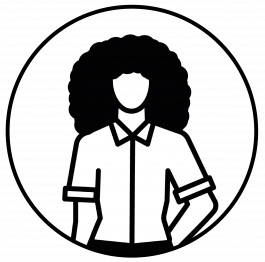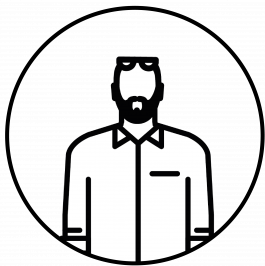Exhibition design for Standin Solidarity! – Black Resistance and Global Anti-Colonialism, 1919–1933
The visual concept of this exhibition ties into the visual language of the Dekoloniale exhibition "Trotz allem!" (2022) at the Friedrichshain-Kreuzberg Museum. Instead of an extensive network of multilayered rhizomes, a close-up of a single rhizome is now presented. In this "zoom in", the various branching paths, fractures, and movements of the pre-war years in Berlin become visible; additionally, a spatial interpretation of the time-focused narrative unfolds.
The creative approach to the imagery examines how close-ups of certain gestures or facial expressions can represent moments of resistance and solidarity. These snapshots are enlarged and combined with contrasting headlines. The font "Martin," digitalized from the protest posters of the "Memphis Sanitation Strike," serves as a central element.
As initiated in the first Dekoloniale exhibition "zurückgeschaut" at the Museum Treptow (2021), graphical elements are intended to disrupt the flow of reading at points where colonial racist and Eurocentric concepts are (re)produced. This visual strategy aims not to erase but to irritate, mark, and overwrite problematic terms and (re)traumatizing histories.
"A rhizome has neither beginning nor end, but always a middle from which it grows and overflows." (Gilles Deleuze & Félix Guattari, 1980)
Services/Expertise
— Scenography
— Key Visual
— Graphic Design
— Conception
Year
— 2023
Design Team
— Danielle Rosales
— Robin Coenen
— Alisa Verzhbitskaya
— Lara Liske
— Moritz Weber (Productdesign)











Exhibition design for Standin Solidarity! – Black Resistance and Global Anti-Colonialism, 1919–1933
The visual concept of this exhibition ties into the visual language of the Dekoloniale exhibition "Trotz allem!" (2022) at the Friedrichshain-Kreuzberg Museum. Instead of an extensive network of multilayered rhizomes, a close-up of a single rhizome is now presented. In this "zoom in", the various branching paths, fractures, and movements of the pre-war years in Berlin become visible; additionally, a spatial interpretation of the time-focused narrative unfolds.
The creative approach to the imagery examines how close-ups of certain gestures or facial expressions can represent moments of resistance and solidarity. These snapshots are enlarged and combined with contrasting headlines. The font "Martin," digitalized from the protest posters of the "Memphis Sanitation Strike," serves as a central element.
As initiated in the first Dekoloniale exhibition "zurückgeschaut" at the Museum Treptow (2021), graphical elements are intended to disrupt the flow of reading at points where colonial racist and Eurocentric concepts are (re)produced. This visual strategy aims not to erase but to irritate, mark, and overwrite problematic terms and (re)traumatizing histories.
"A rhizome has neither beginning nor end, but always a middle from which it grows and overflows." (Gilles Deleuze & Félix Guattari, 1980)
Services/Expertise
— Scenography
— Key Visual
— Graphic Design
— Conception
Year
— 2023
Design Team
— Danielle Rosales
— Robin Coenen
— Alisa Verzhbitskaya
— Lara Liske
— Moritz Weber (Productdesign)











Think we can help?
Contact us!
Email: echo[at]visual-intelligence.org
Phone: 0049 (0)30 2245 8600
vi
visual intelligence
and communication gbr
Rosales & Coenen
Perleberger Strasse 10,
10559 Berlin
part of
civic city
integral designers
n-gram

